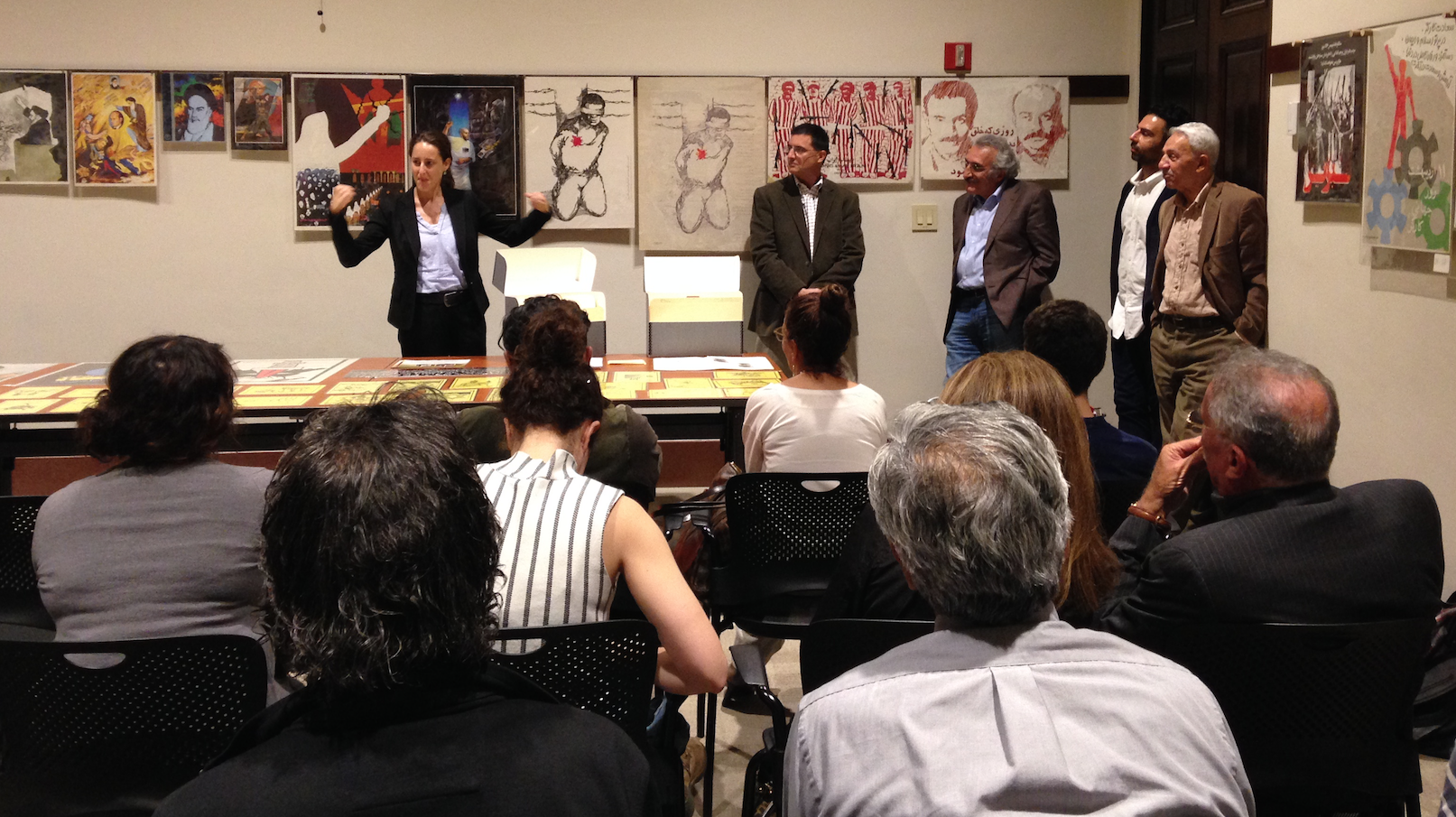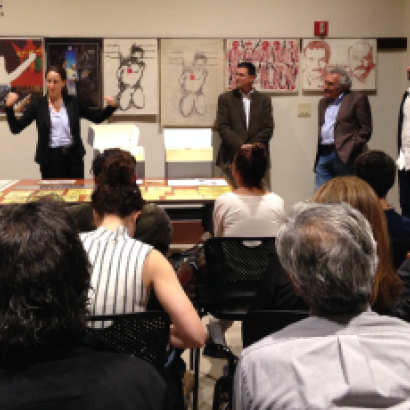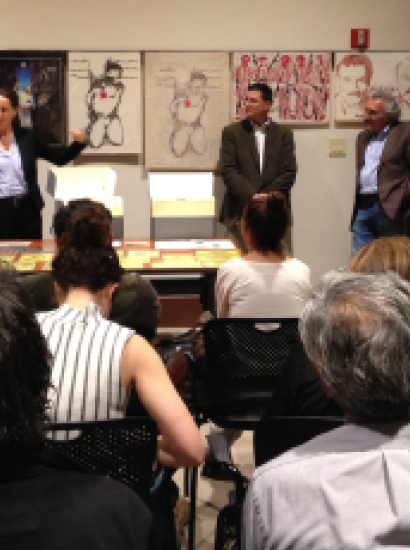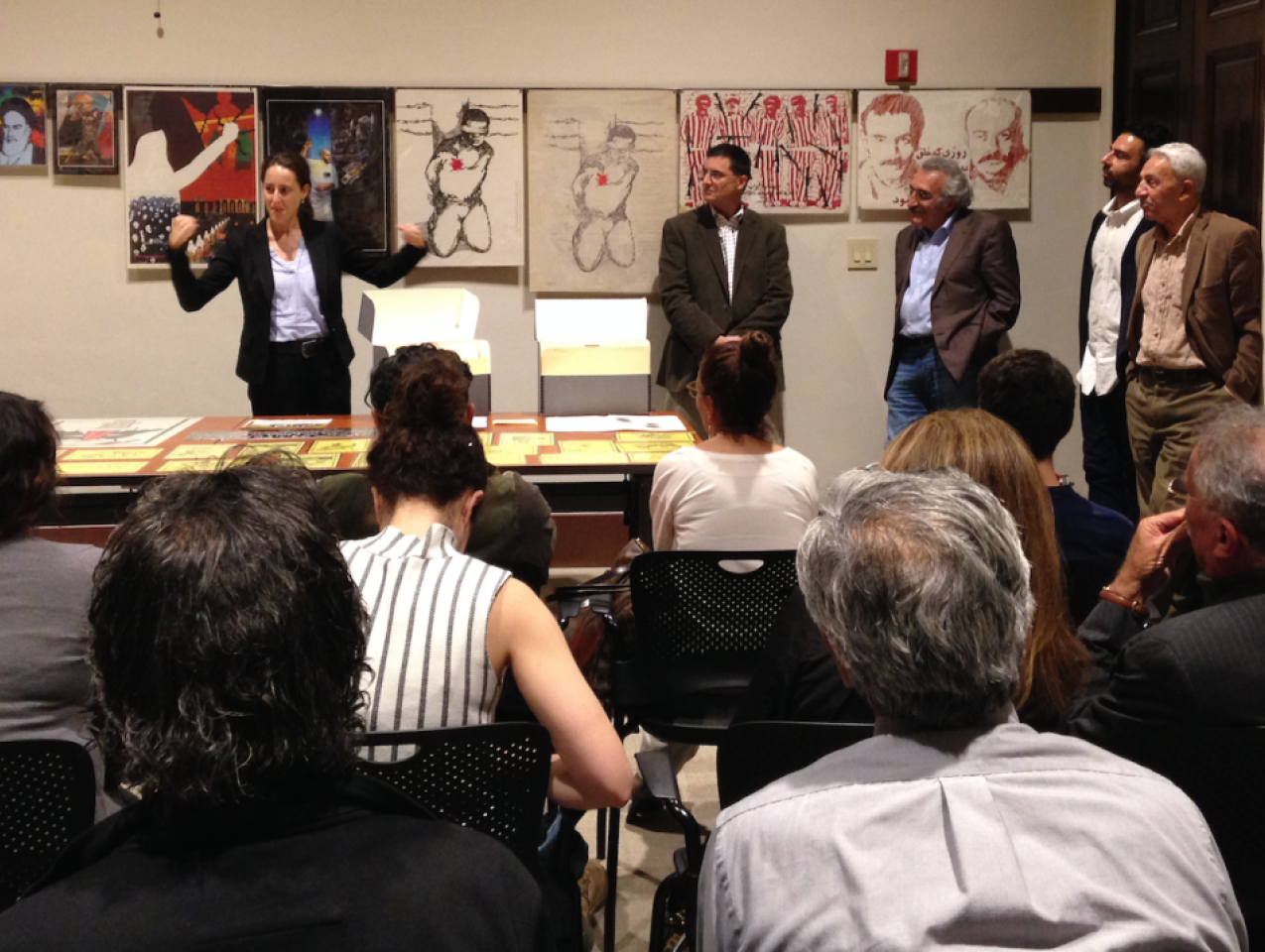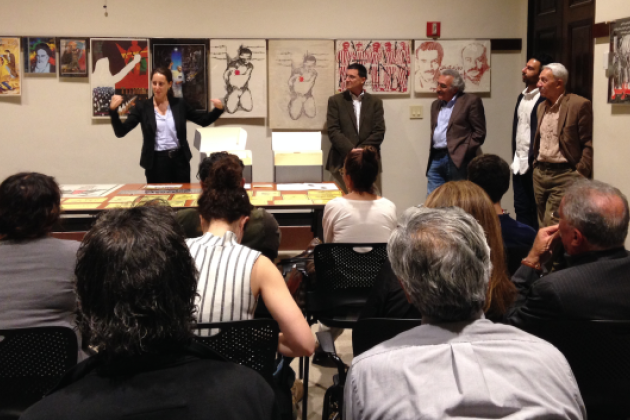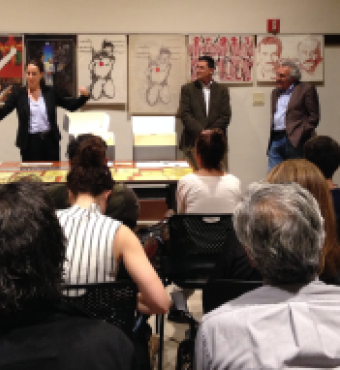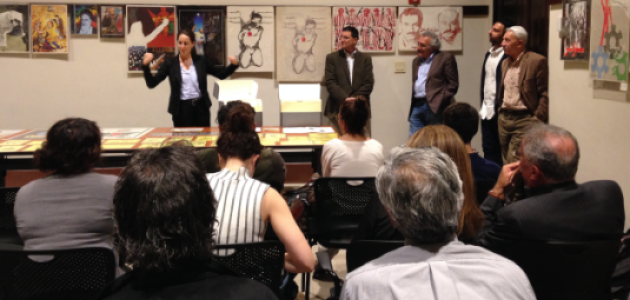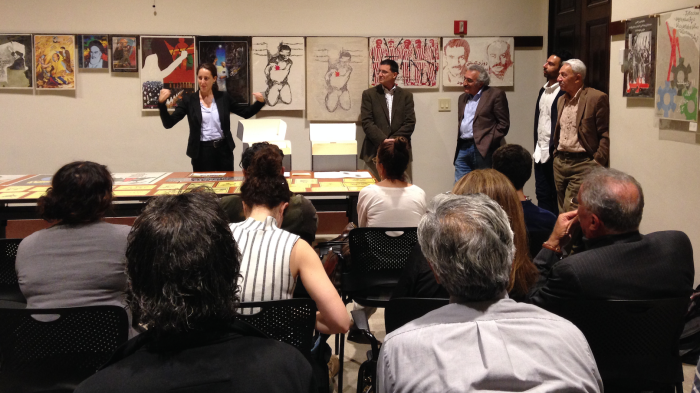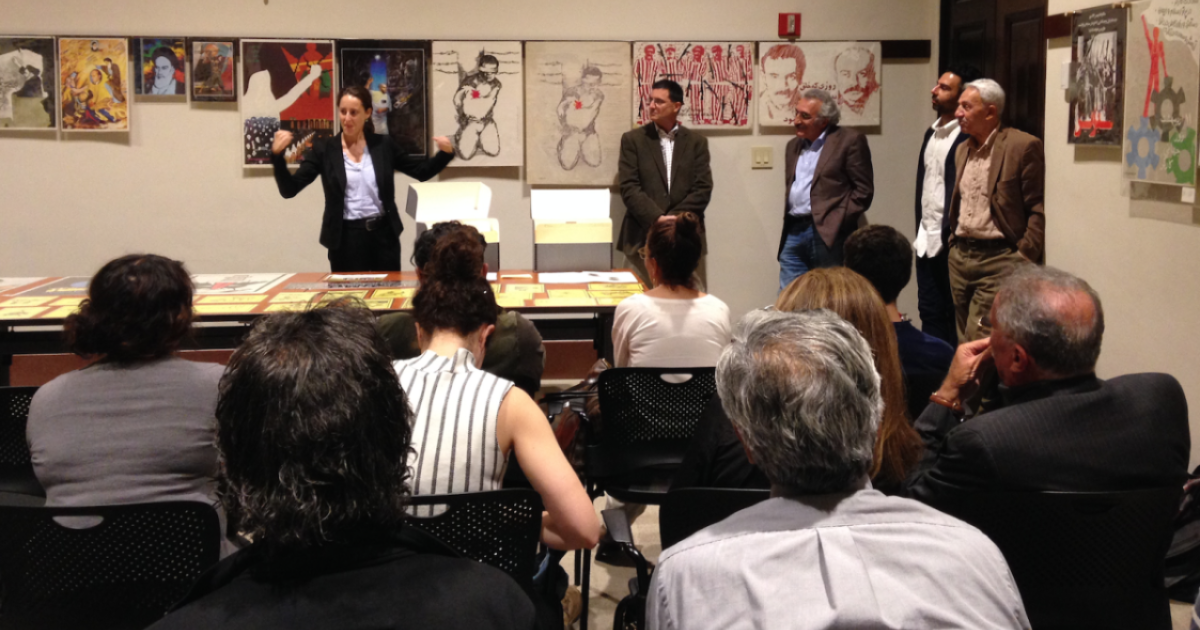On November 4, participants from the series Art, Social Space and Public Discourse in Iran visited Hoover Archives to view posters and graphic material from the Iranian Revolution and Iran-Iraq War. Art, Social Space and Public Discourse in Iran is the first chapter of a symposium series on Iranian art that aims to bring together an interdisciplinary array of critical conversations, on-site practices, and collaborative art projects in order to reassess and redefine art in the context of public space. This unprecedented three-year initiative on Iranian art, co-sponsored by Stanford’s department of Iranian Studies, Stanford Global Studies, the Institute for Diversity in the Arts, and Stanford’s Center for Comparative Studies in Race and Ethnicity, investigates the multiple contexts that shift and define changing ideas of what constitutes Iranian public space. Visitors to Hoover not only viewed rare materials from Hoover’s collections, but enjoyed remarks by Hoover fellow and the director of Stanford’s Hamid and Christina Moghadam Program in Iranian Studies, Abbas Milani. Milani was joined by Eric Wakin, director of Hoover Library & Archives, professor and book arts expert Christiane Gruber, Nasser Rahmaninejad, an artist and former political prisoner in Iran, and organizer Ala Ebtekar, visual artist and a lecturer at the Institute for Diversity in the Arts at Stanford.
This year’s inaugural Art, Social Space and Public Discourse in Iran program was a three-day symposium that included talks, panels, projects, and performances. The opening took place at the Asian Art Museum in San Francisco on November 3rd with a live-stream from a traditional coffeehouse in Tehran, Iran. The symposium continued at Stanford on November 4th & 5th with a series of talks, panels, and performances. The symposium’s panels facilitated dialogue between various local and internationally based academics, along with renowned urban artists GhalamDAR, Mehdi Ghadyanloo, and artist collective Slavs and Tatars, and discussed the politics of public space and the history of public engagement in Iran. In addition, the artists collaborated with Stanford students to produce pieces of public art both in San Francisco and on Stanford campus.




